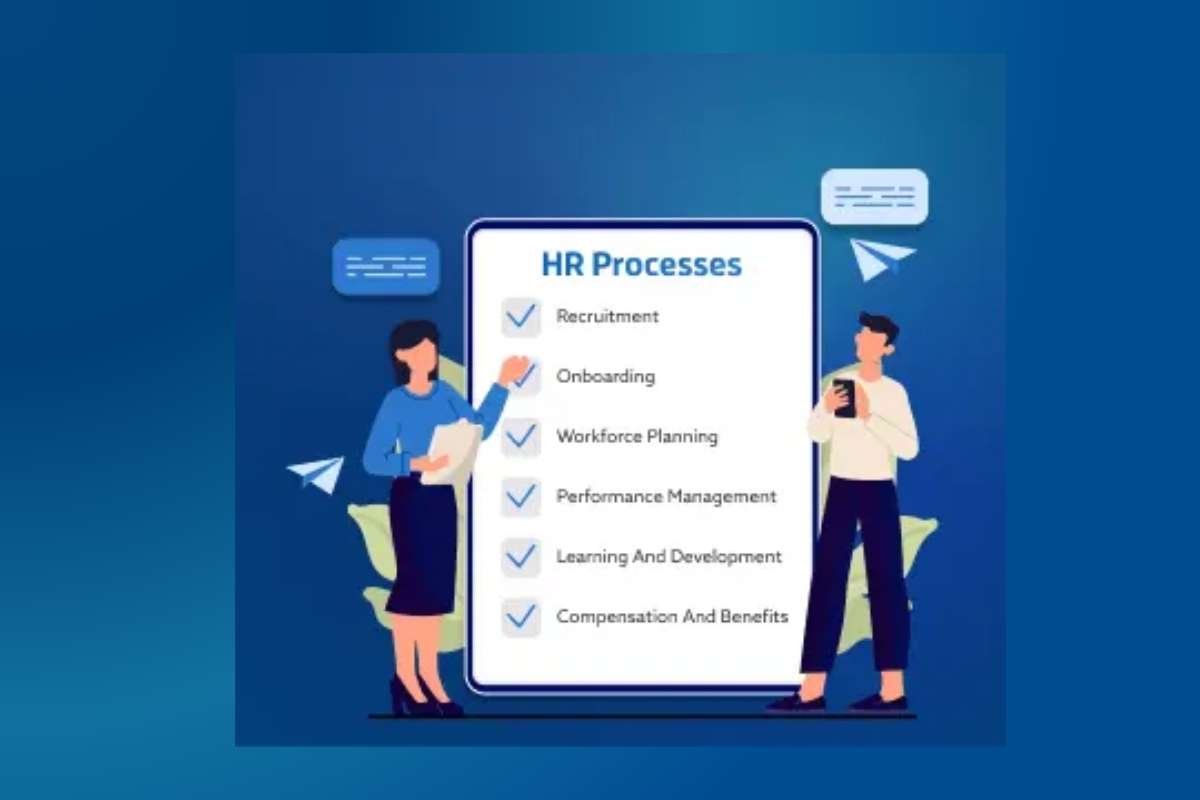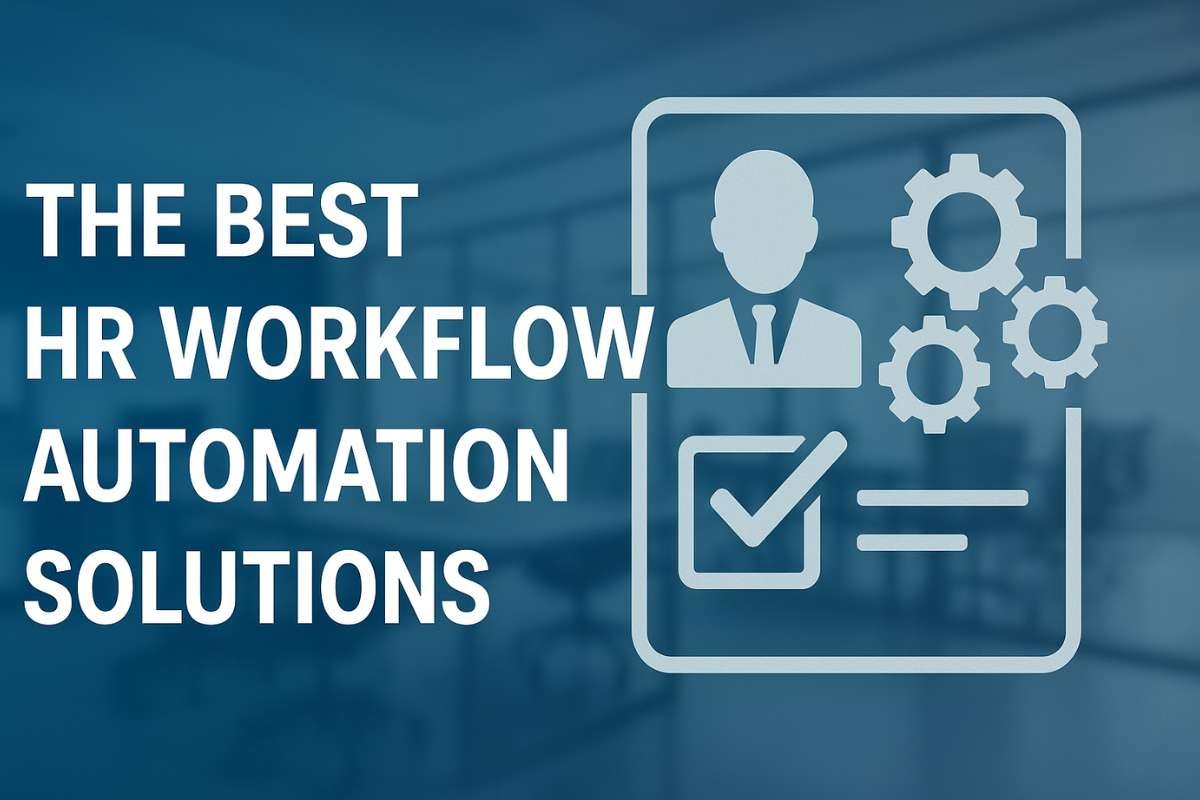HR workflow automation is no longer a luxury – it’s a necessity. HR teams are under growing pressure to manage talent acquisition, employee onboarding, time tracking, payroll, and compliance, all while maintaining high levels of accuracy and efficiency. Manual processes not only slow operations but also increase the risk of errors and compliance issues. That’s why businesses of all sizes are increasingly turning to HR automation tools to transform how their people teams work.
What is HR Workflow Automation?
Human resources workflow automation is the use of software and digital tools to streamline repetitive and rules-based human resource tasks. Instead of relying on manual data entry, paper forms, and email threads, automation enables HR teams to design workflows that route tasks, collect data, and trigger actions based on predefined rules.
For example, when a new employee is hired, an automated onboarding workflow might send them a welcome email, schedule orientation meetings, assign equipment tasks to IT, and prompt managers to complete training checklists – all without HR lifting a finger beyond initiating the hire.
Automation spans across core HR areas such as recruitment, onboarding, leave approvals, performance reviews, payroll, compliance training, and more. It frees up time for HR professionals to focus on strategic initiatives like employee engagement, culture, and talent development.
Key Benefits of HR Workflow Automation
Implementing workflow automation in HR brings a host of strategic and operational benefits. Here are some of the most impactful:
1. Improved Efficiency
Tasks that used to take hours or even days can be completed in minutes. Automated reminders, approvals, and data flows eliminate unnecessary back-and-forths and delays.
2. Reduced Errors
Manual data entry and documentation are prone to mistakes. Automation ensures consistency and accuracy, particularly in sensitive areas like payroll and compliance.
3. Enhanced Employee Experience
A seamless onboarding process, faster responses to leave requests, and timely updates make for a better employee experience – one that shows the company values people’s time.
4. Better Compliance
Automated workflows help ensure legal and organizational policies are followed, with built-in audit trails, notifications, and document retention features that make compliance easier.
5. Cost Savings
By reducing the need for administrative labor and minimizing costly errors, automation helps cut operational costs and maximize HR productivity.
6. Actionable Insights
Many HR automation platforms offer built-in analytics and dashboards, enabling data-driven decision-making around hiring, retention, and employee performance.
Examples of HR Processes That Can Be Automated

Automation can be applied to almost every stage of the employee lifecycle. Below are some of the most common HR workflows ripe for automation:
✅ Recruitment and Applicant Tracking
Automate job postings across platforms, schedule interviews, send follow-up emails, and manage candidate data with applicant tracking systems (ATS).
✅ Employee Onboarding
Create a standardized onboarding journey – send welcome kits, gather required documents, assign trainings, and notify departments such as IT or payroll automatically.
✅ Leave and Time-Off Requests
Enable employees to submit leave requests digitally, route them to managers for approval, and sync them with the company calendar and payroll systems.
✅ Performance Reviews
Set reminders for quarterly or annual reviews, automate 360-degree feedback collection, and trigger development plans based on review outcomes.
✅ Payroll Processing
Automate data collection for timesheets, apply pre-set rules for deductions or bonuses, and ensure timely payouts with minimal manual intervention.
✅ Compliance and Policy Updates
Push updates automatically when a new policy is released, track who has acknowledged receipt, and follow up with reminders.
✅ Offboarding
When an employee exits, trigger tasks such as revoking system access, scheduling exit interviews, calculating final payments, and archiving records.
How to Implement HR Workflow Automation?
Transitioning to automated HR workflows requires planning, stakeholder engagement, and the right tools. Here’s a step-by-step approach to ensure successful implementation:
1. Audit Your Current HR Processes
Map out existing workflows. Identify repetitive, error-prone, or time-consuming tasks that can benefit most from automation.
2. Set Clear Objectives
What are you trying to achieve – faster onboarding, fewer payroll errors, better compliance tracking? Define measurable goals for automation.
3. Choose the Right HR Automation Platform
Look for tools that match your organization’s size, budget, and integration needs. Features to consider include drag-and-drop workflow builders, AI-powered suggestions, and analytics.
4. Start Small, Then Scale
Begin with automating a single high-impact process like onboarding or leave requests. Once that’s stable, expand to other workflows.
5. Train HR Teams and Employees
Ensure everyone understands how to use the new system. Provide clear documentation, hold workshops, and maintain open communication during the transition.
6. Monitor, Optimize, and Iterate
Track performance against your KPIs. Gather feedback from users and fine-tune workflows as your organization evolves.
Top HR Workflow Automation Tools in 2025

The HR tech landscape has evolved significantly, and several platforms now offer robust automation capabilities. Here are some of the best HR workflow automation tools available in 2025:
🏆 1. Bitrix24
Best for All-in-One Business Automation
Bitrix24 is a standout solution for human resources workflow automation, especially for companies seeking an integrated platform that goes beyond HR. It offers:
- Automated recruitment and onboarding workflows
- Leave management and time tracking
- Built-in CRM, communication tools, and project management
- Custom workflows and process templates
- Cloud and on-premise options
- Free tier with generous features for small teams
Why Choose Bitrix24:
Its HR tools are part of a broader ecosystem, making it ideal for companies that want to connect HR with sales, marketing, and operations in one unified platform.
⭐ 2. BambooHR
Best for Small to Midsize Businesses
BambooHR offers user-friendly HR automation tailored for SMBs. Features include e-signatures, automated time-off approvals, onboarding checklists, and customizable workflows.
⭐ 3. Zoho People
Best for Customization and Affordability
Zoho People allows HR teams to build complex workflows without coding, using its drag-and-drop automation builder. It supports onboarding, performance reviews, attendance, and more.
⭐ 4. Workday HCM
Best for Enterprises
Workday provides enterprise-grade HR automation, particularly in workforce planning, talent management, and analytics. Its AI-driven insights help HR leaders make smarter decisions.
⭐ 5. Gusto
Best for Payroll and Benefits Automation
Gusto streamlines payroll, benefits, and tax filings with impressive automation. It’s ideal for small teams looking to offload the complexities of compliance-heavy HR tasks.
⭐ 6. SAP SuccessFactors
Best for Global Organizations
SAP’s robust HR platform includes workflow automation for global compliance, recruitment, employee lifecycle management, and performance.
⭐ 7. Leapsome

Best for Performance and Development Automation
Focused on continuous performance management, Leapsome automates review cycles, feedback loops, goal tracking, and learning paths.
Conclusion
Human resources workflow automation is transforming how companies manage their most important asset – people. By automating repetitive and error-prone tasks, HR teams can reclaim time, boost accuracy, enhance employee experience, and focus on driving culture and growth.
Whether you’re a startup, a mid-sized business, or a multinational enterprise, there’s an HR automation platform tailored to your needs. Tools like Bitrix24 offer a powerful all-in-one solution, while specialized platforms like BambooHR and Gusto excel in niche areas.
The future of HR is automated – and the sooner your team adapts, the faster you’ll unlock its full potential.






